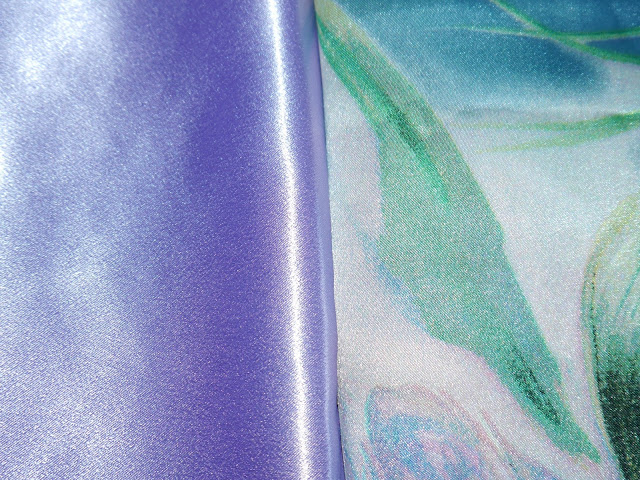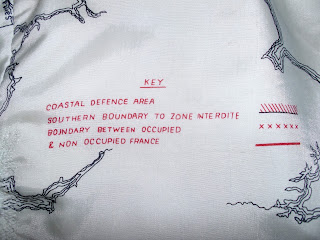This is the final instalment of my tutorials about Fibres and Fabrics, the focus this time is Synthetic Fibres. There are three main groups of Synthetics;
- Nylon, first marketed as a fibre for apparel in 1938
- Polyester, the most widely used of the Synthetic fibres developed at the same time as Nylon but only perfected for clothing in the 1950s
- Acrylic, also arriving in the 1950s and the softest of the Synthetics.
These fibres came out of probably the most significant example of ‘pure’ research (research that has no particular end point and is an exploration of knowledge for its own sake) during the 20th Century; it has completely transformed the clothing industry. Before the advent of Synthetics clothes were made out of natural, and in the early 20th Century Regenerated, fibres which were time consuming and costly to produce because of major limitations that dictated the amount and production of cloth. Making Synthetic fibres from the mid-20th Century onwards has been far less expensive and only limited by the availability of Petrochemicals, derived from Oil production, and the technology needed to produce them.
These fibres are produced by extracting sticky, string-like molecules from oil which are then melted and stretched in to a fine filament by various means according to the kind of Synthetic fibre to be made; Nylon becomes a harder and glass-like fibre, Polyester is a round filament that more closely resembles Silk, and Acrylic is softer than the other two.
All of the Synthetic fibres share some of their
characteristics, the shared qualities being;
- They collect or retain static electricity
- Easily damaged by hot irons
- Will quickly blunt needles and scissors
- Skipped stitches and puckered seams can be a problem
- Pills easily, (pilling is the formation of bobbles on the surface of the fabric)
- Dries very swiftly after washing
- Durable
- Can be made in to a large range of products
- Easy to dye and colour fast.
Each of these Synthetics though has individual qualities that make them suitable for different uses.
Nylon;
- Shiny fibre
- Elastic
- Woven fabrics fray easily
- Dirt and lint cling to the surface and fabrics can cling to the needle.
Polyester;
- Resist creasing
- Has good elasticity and stretch recovery
- Easy to launder and does not require ironing
- Crisp and resilient
- Resists moths, mildew and most chemicals
- Fabrics are easier to sew after laundering
- Has poor absorbency and can be uncomfortable to wear
- Fabrics wear at garment edges
- Attracts smoke and dust and needs cleaning more regularly.
Acrylic;
- Resistant to abrasion, moths, sun and weather
- Can be heat set to hold creases/pleats
- Has low moisture absorbency but wicks well
- Most are washable
- Absorbs and holds perspiration
- Some shrink badly.
However, the easy and inexpensive production, durability and the ease with which they can be mixed with other fibres makes them the prime material for making a huge variety of fabrics and other consumer goods.
 |
| My waterproof jacket
This extremely common product is a Polyester fleece lined waterproof jacket, I’ve had it for years and it still looks pretty good and does the job really well.
|
 |
| Super practical, lightweight shoes for all occasions |
 |
| Polyester clothing |
Here are two very different finishes of Polyester cloth, on the left is a Velvet dress and on the right Georgette blouse.
 |
| Thread and notions |
Synthetic thread is the most widely used for sewing, the first three on the left are all different brands of Polyester sewing thread, the orange is the same fibre but with a lower twist value and only suitable for overlocking thread; these are produced by spinning together cut staple fibres to resemble cotton. Next come the fine and silky purple and metallic gold Polyester embroidery thread, made with spun filament fibres, and finally single filament invisible thread. In the foreground are one of my Polyester woven labels and a Nylon (coil) zip.
 |
| Synthetic embellishments |
Synthetic fibres have given rise to a massive explosion in the textures that can be achieved at little cost, ribbons and lace have become easy and very cheap to produce, the variety available is pretty well unlimited.
 |
| Nylon Linings |
Nylon is shiny and makes a slippery cloth that is perfect for linings, the colour and texture of which can be varied easily in the weaving. On the left is a twill lining and the centre and right are shiny textured linings.
 |
| Polyester Satin |
Woven filament Polyester fibres make beautiful silky satins that can be very fine or heavier Duchess, these are far less expensive than Silk, around 10-20% of the price depending on the weight and quality. These are far more durable than Silk for garments and can be easily, if gently washed and drip dried. The earlier Regenerated satins of the early 20th Century were swiftly superseded by Synthetics because they were cheaper and more durable.
 |
| Textured Synthetics |
On the left is Polyester Taffeta, this is much crisper and retains its finish far longer than Silk Taffeta, although being really crisp it still creases easily despite being fairly easy to wash and iron. The knitted cloth on the right is mixed with a Polyester metallic thread which shimmers but absolutely kills one’s scissors and needles!
 |
| Polyester and Acrylic soft furnishing fabrics |
Because they are so hard wearing and because they can be easily made into many textures, Synthetic fibres can be mixed to produce heavy and highly textured upholstery materials that don’t fade and last much longer than their natural counterparts. These cheaper materials have brought down the cost of furnishings for the homeor workplace and make these products more attainable for all budgets. Because they need re-covering less frequently the life of furniture is extended as well.
 |
| All mixed up with Natural fibres |
One can hardly escape Polyester/Cotton mixes like the Linen Look Poly/Cotton on the right and Poly/Cotton Suiting in the middle. This is a superb mix of fibres, it has greater durability and colour fastness than pure Cotton and is softer and more breathable than Polyester alone. Acrylic, used as short staple fibres mixed with Wool to reduce the cost and weight of cot fabrics, and makes cloth that is easier to launder and less prone to shrink.
Sewing with Synthetics
Synthetic fibres will wear out your scissors and needles far quicker than natural fibres. I have a very special pair of hugely expensive tailor’s shears which I NEVER use on Synthetic materials, my Fiskars scissors get sharpened annually to keep them good and sharp – choose somewhere reputable for scissor sharpening , I use Franklins exclusively and give them some Silk Chiffon and demand that this be cut like a hot knife through butter every time! I reserve certain needles for Silk cloth thus avoiding damaging expensive fabric with blunt needles that have been used for Synthetics. If your machine skips stitches when sewing Synthetic cloth the needle is more than likely to be blunted so change it regularly to avoid this.
Synthetic fabrics can slide around a fair bit when sewing so if you are just starting out use pure Cotton to start with and then move on to Poly/Cotton, which has a slightly different handle. When you feel confident move on to more challenging materials take your time. Some Synthetics can be difficult to ‘ease’ such as when you set in sleeves but this crispness is wonderful for frills and pleats. Satin is very slippery so tac it in the seam allowance to make it easier for yourself.
Stretch fabrics are as diverse as any other Synthetics; some are really difficult to sew with – especially those very fine shiny ones. Most chunkier knits and fleeces are very straight forward using Jersey needles; using an overlocker alone (if you have one) set up to use four threads is ideal for seams, it saves oodles of time, retains the fabric’s stretch and finishes as you go. Most of us (including me) don’t have a coverstitch machine, this is the machine that finishes hems on the right side with two rows of running stitch and on the wrong side covers the edge of the fabric with what looks like an overlocked stitch. I would love one of these machines but they are only made for industrial use so you need lots of space and would need to be using it all the time to justify the outlay as they are single use machines.
Special Synthetics
Two more Synthetic fabrics you may want to experiment with are Faux Fir and PVC or Pleather. These can not be ironed. In the case of PVC you will need a Teflon sewing foot and foot plate for your machine to stop it from dragging as you sew and it is easily marked by stitching and pinning, it can be easily torn too so can only be sewn once – no unpicking mistakes or letting out garments made with PVC. With Faux Fur you will need to be mindful of the pile, combing it away from the seam as you pin it and trimming the pile in the seam allowance after sewing. You will need to use a larger gauge Jersey needle too.
Finally, don’t be afraid to experiment with Synthetics, as with every kind of fabric there are easy ones to begin with and more challenging fabrics to try out as you get more confident. Go for it and make mistakes – if you know someone like me, who will have lots of scraps, ask to root through their scrap box and you will find lots of goodies to play with that won’t cost you much, if anything at all.
Have fun fellow sewers.






